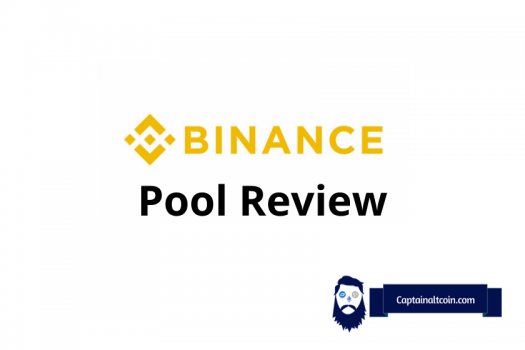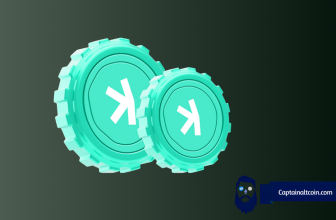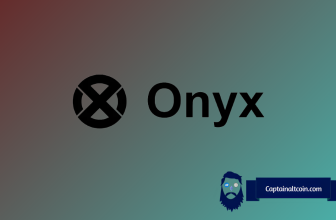Binance Cloud Mining Review – Is Binance Pool Worth It?

What you'll learn 👉
What Is Binance Smart Pool
In the ever-evolving world of cryptocurrency, Binance has emerged as a leading platform for exchanging and storing digital assets.
But did you know that Binance offers more than just a trading platform? In this comprehensive review, we delve into the innovative feature of Binance – the Binance Pool
his feature not only allows users to deposit their coins and earn interest but also provides an opportunity for miners to contribute their computing power in exchange for funds
That isn’t the only benefit though. The pool reduces the time devoted by the miners while mining and boosts the income spawned by mining. Binance smart pool automatically initiates working on those cryptocurrencies which spawn the highest profit.
| Emoji | Content |
|---|---|
| 💱 | Binance is a platform where users can exchange cryptocurrencies and store their electronic funds. Their new Pool feature allows users to deposit coins and earn interest. |
| ⛏️ | Binance Pool is powered by miners who offer their computing power in exchange for funds. The pool reduces the time devoted by the miners while mining and boosts the income spawned by mining. |
| ☁️ | Binance Cloud Mining is a product that lets users earn mining rewards without having to buy, set up, or run mining equipment. It only supports Bitcoin mining. |
| 📊 | Binance Pool has been responsible for about 11% of the total hash rate on the Bitcoin network and has mined 11.37% of blocks in the last six months (as of November 2022). |
| 💰 | Binance Pool charges a fee of 0.5% for the utilization of the Binance Ethereum mining pool. Earnings are directly transferred to the Binance pool account by 10:00 (UTC) every day. |
| 🎰 | Binance offers both Staking and Mining Pools. In the Staking Pool, stakeholders combine their staking power to earn higher rewards. In the Mining Pool, rewards are distributed every 24 hours. |
| 🔄 | Binance Smart Pool allows miners to switch seamlessly between different cryptos using the same algorithm, making an easier earning experience. |
| ❓ | Binance Pool offers an easy-to-use tool named watcher links, which enables the user to monitor the operating conditions of the miners and calculate their hash rates. |

The same algorithm enables the miners to auto-switch their hash rate to various cryptocurrencies. SHA256 algorithm is presently being supported by the Binance smart pool, which allows the miners to work on BTC, BCH, and BSV.
What Coins Can You Mine on Binance Pool
Numerous coins can be exchanged at Binance pool such as:-
2. Ethereum
4. Binance USD
9. Filecoin
These are some of the most popular cryptocurrencies exchanged on the platform.
What Is Binance Pool’s Hashrate
In the crypto environment, mining is measured by its “hash” rate. This is an indicator of the speed of the mining. New users to the Binance Pool will receive no less than 100 TeraHashes/s.
Hash Rate Resale
Hashrate resale allows users to sell a portion of their hash rate to another user, either as an absolute value or a percentage of their total hash rate. This allows various sorts of hash rate suppliers to assign their hash rate in a flexible manner and give a flexible method for distribution among miners in mining cooperatives.
What Are the Fees
A charge of only 0.5% is deducted as a fee on the utilization of the Binance Ethereum mining pool which makes use of FFPS mining. Nodes have been deployed by the Binance pool all over the world to encourage interaction by the international mining community. The Binance pool does not have a minimum deposit requirement for ETH.
How Often Does Binance Pool Payout
Earnings are directly transferred to the Binance pool account by 10:00 (UTC) every day after the calculations are developed. Binance pays out the earnings to their users once per day.
Binance Offers Both Staking and Mining Pools
Binance offers two methods to earn profit or rewards. Both methods have their own advantages and flaws so it is important to analyze them carefully and in relation to your situation.
Staking Pool
To raise the odds of being rewarded, what the stakeholders do is gather all of their
Arithmetical funds in order to amplify their chances of being rewarded. To put it in another way, numerous stakeholders combine their staking power in order to earn higher rewards and earn those rewards more frequently.
The term “Staking” pool relates to Proof-of-Stake blockchains. The pool supports various of these coins and blockchains, by locking away your funds you gain coins in return, the amount depending on your stake. Pool operators and stakeholders are the managers and decision-makers of the stake pool who lock their respective coins in a certain blockchain address.
In some cases, a requirement is put in front of the users by some pools that they must stake their coins with a third party. However, a number of substitutes are present, which permits the stakeholders to have custody of their coins whilst still earning rewards for staking.
Mining Pool
A charge of 0.5% pool fee is deducted by Binance for using Binance Ethereum mining pool which brings into play the FPPS mining method. This is a good rate, though when it comes to other coins, Binance charges a much larger 2.5%. Nodes are being launched by Binance internationally to support the usage of miners across the globe.
Just like the staking pool, Mining pool rewards are distributed every 24 hours.
Read also:
- Minergate Review – Is Minergate scam or legit?
- Nicehash vs Minergate: Cloud Mining Duel
- Best Bitcoin Cloud Mining Websites – Complete Guide
- Genesis Mining Review – Is it a scam? How profitable is cloud mining on Genesis?
- Best Litecoin Mining Pools– Guide and Comparison of Top LTC Pools
How to Join Binance Pools
Following is how you can connect to the Binance pool:-
1. Start by linking your mining hardware/computer to your Binance mining account
2. On the configuration page of the mining machine, configure the mining URL and worker ID.
4. Select a payment method.
5. First, go to Mining Account Management.
6. Select more settings.
7. Payment settings.
8. Select smart pool and click save.
9. Binance smart pool date is adjusted according to the T day theory; this indicates that the Binance pool will get into the action a day after (T+1) when users sets (T), and the users will get the income of their smart pool after two days (T+2).
10. Keep checking the settlement income and real-time income.
On the statistics page of the smart pool, users are given the ability to check the Today Estimated Income BTC, BCH, and BSV whilst using the smart pool.
General earnings are visible to the users. In addition to this, users can also access the extra bonus page, which collects the additional earnings from the smart pool.
Read also:
- Binance Staking Review – How to Stake Coins on Binance?
- Binance Earn Review – How Do Binance Fixed & Flexible Savings Work?
- How to Trade Binance Options | Binance Option Review
- Binance NFT Marketplace Review









